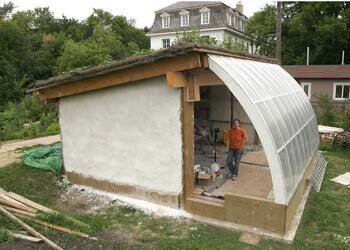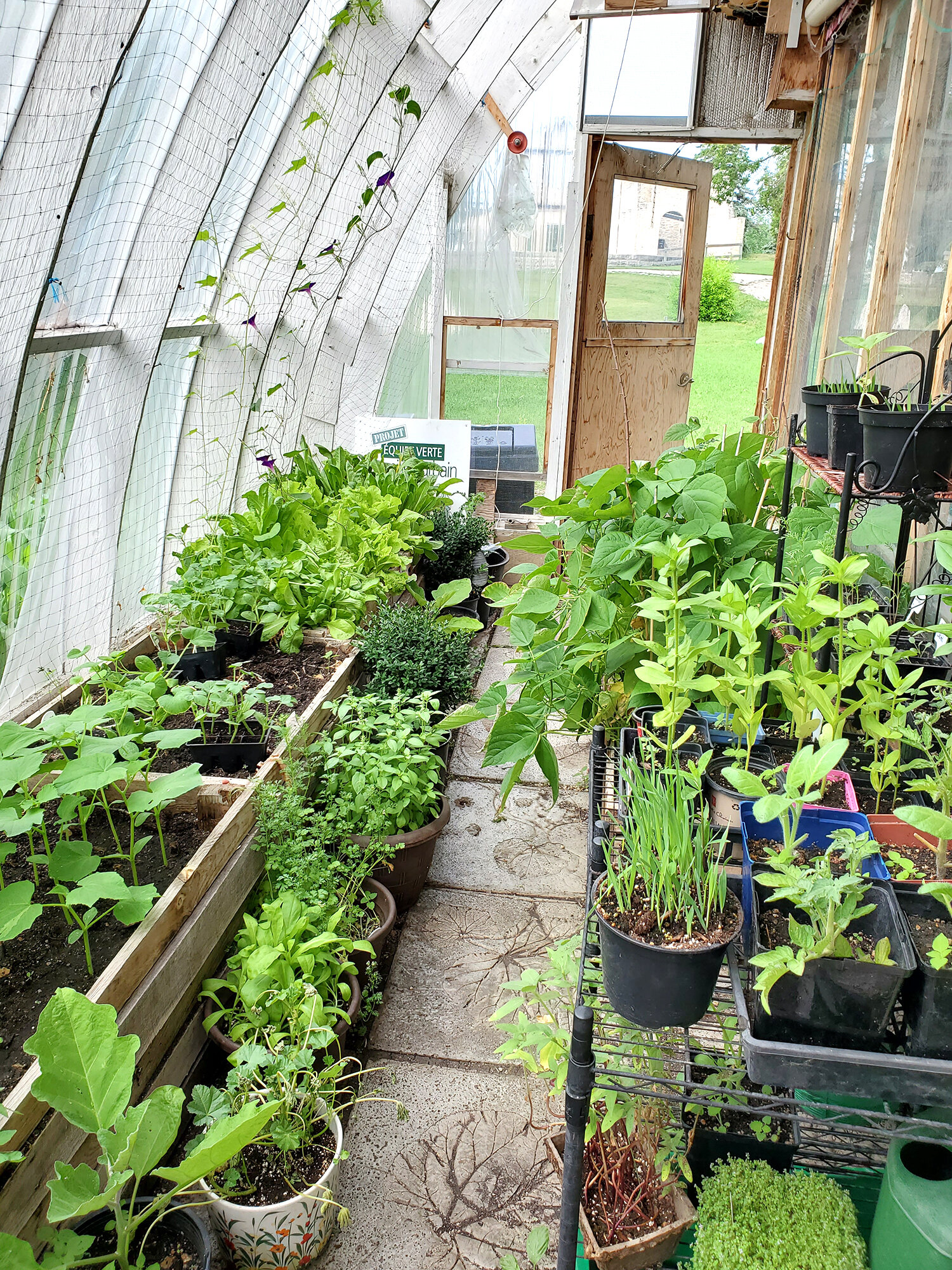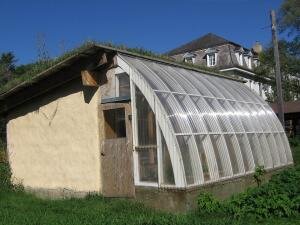Solar Greenhouse.
The need for local food production is increasing.
There is a need on the Prairies to develop and practice methods of food production that require minimal or no dependence on unreliable petroleum fuel. The average meal travels over 2000 km before it is consumed in Manitoba, as fuel prices increase, the cost of food also increases, making it more difficult for people to access healthy food.
The term “Food security” means production or availability of nutritionally adequate and safe food, access or capacity to access nutritionally adequate and safe food.
As our dependence on food grown at great distances from places of consumption increases our food security decreases. Solar greenhouses can provide an extension of our short growing season and expand our capacity to grow food while requiring little or no energy input if designed properly.
The SNAC greenhouse incorporates solar design principles as well as an aquaculture system and hydroponics gardens. The greenhouse has been designed by a number of community members with the help of Tang Lee Professor of Architecture, Faculty of Environmental Design at the University of Calgary. Tang Lee has taught building science, sustainable design, solar energy and environmental health for over 25 years. His work on indoor air quality and toxic moulds has led to changes that protect the health of occupants. Tang owns a large chemical-free fish farm. The greenhouse will serve as a demonstration of solar design, greenhouse food production, aquaculture systems as well as natural building. The construction of the building will be carried out in a workshop setting to maximize its educational capacity. Once complete there will be extensive documentation of the energy inputs and year round temperatures, this information will be made public in order to facilitate the construction of more greenhouses.
The Greenhouse designed for the St. Norbert Art Centre incorporates the basic principles of solar design;
Glazing oriented to receive maximum solar heat during the winter.
Incorporating Heat storing materials to retain solar heat.
Efficient amount of insulation to prevent heat loss.
Rely primarily on natural ventilation for summer cooling.
Solar design and natural building seem to fit together naturally, through incorporating principles and practices from both fields we look forward to contributing to the use of simple local energy sources and sustainable technologies in Manitoba, while attempting to increase local food security.






